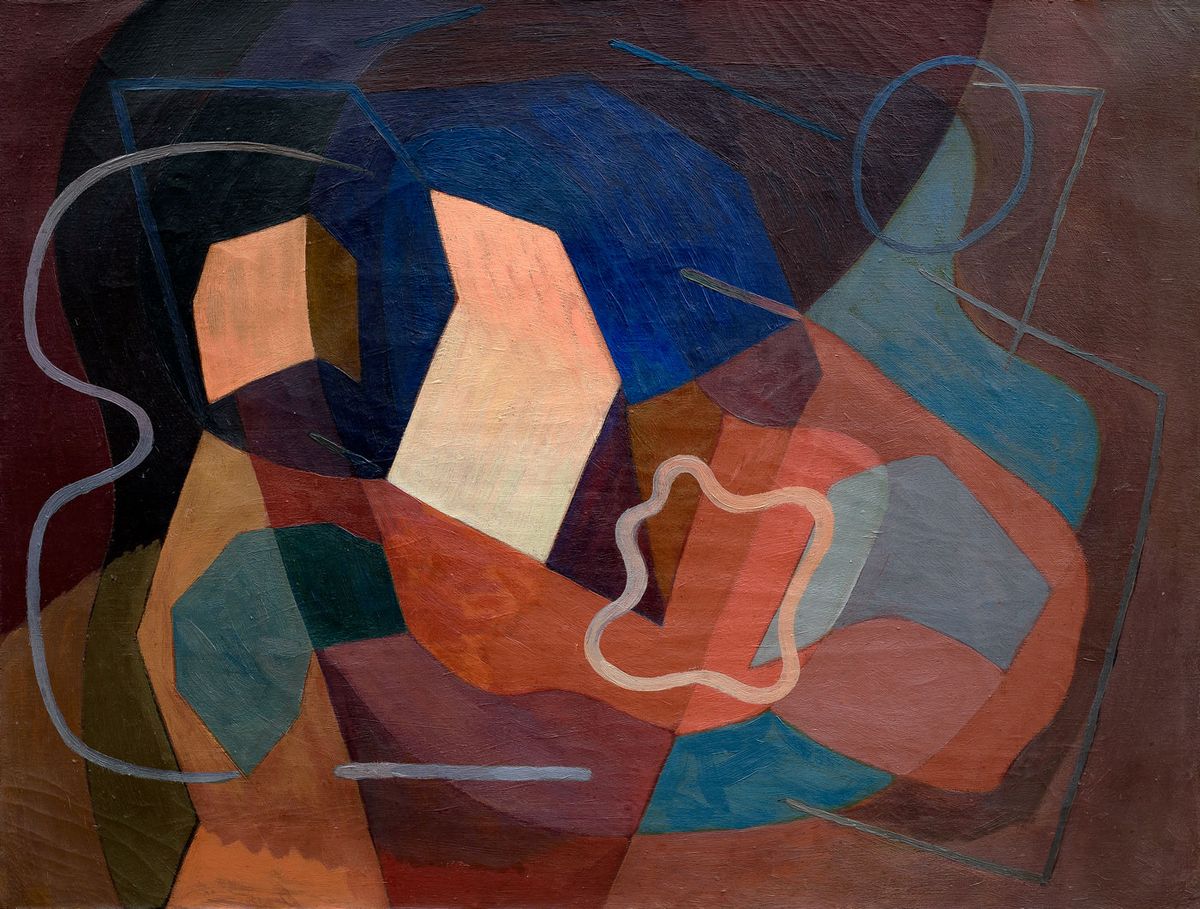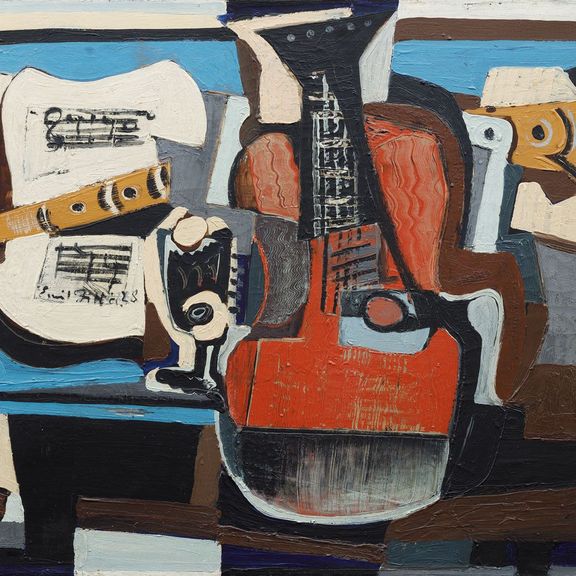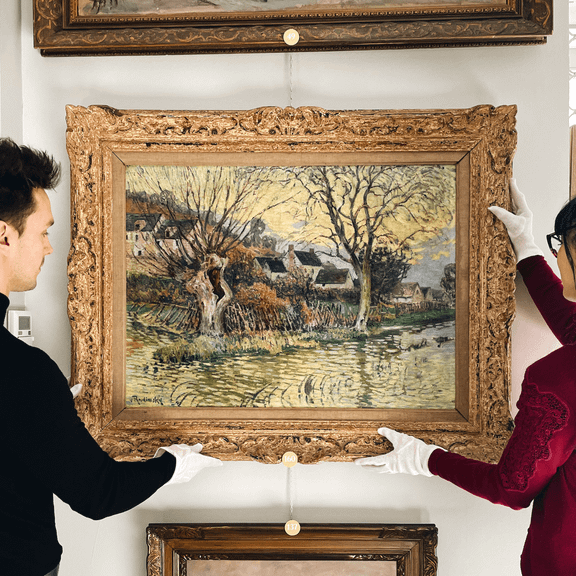
olej na plátně
kolem roku 1935
46 × 61 cm
frame
This characteristic painting by František Foltýn comes from his highly valued period of work around the year 1935. With its sophisticated additive composition of shapes, further enhanced by a painterly well-thought-out contrasting colour scheme, it excellently points to ideological values and ties with artistic groups Cercle et Carré and Abstraction-Création , in which this Czech artist was a founding member. Foltýn took one of the most complex and also distinctive paths within the then expanding phenomenon of non-figurative painting, and this very sovereign, sophisticated composition perfectly represents his formulation of the principles of pure abstraction in art. It is based on the contradictions of colours and shapes, geometric structures, line segments, organic lines, and vague amorphous forms, which overlap naturally and evoke the impression of constant action, irritating the beholder’s senses and attracting their attention. This complicated work presents a smooth flow of the artist’s thoughts to the beholder, which freely derives from his imaginative ideas and expressions of a spontaneous joy of creation. It proves Foltýn’s lifelong effort to communicate his emotions through painting without a direct link to a specific object or association, and thus achieve the principles of pure abstraction in art. The painting gives the impression of a three-dimensional image, and, without using any narrative features, it seems to capture some sort of inner action, inviting the beholder to immerse in its depth as if it were an imaginative landscape. The attractiveness of this painting for collectors is further enhanced by its origin of the high-quality Prague collection of painter and illustrator Ondřej Sekora, who obtained it directly from the artist. The work is in the original frame. Assessed during consultations by prof. J. Zemina and PhDr. R. Michalová, Ph.D. From the attached expertise by PhDr. K. Srp: “[…] A solid composition, together with a colour palette emerging from itself that excludes violent tones, represents the core of Foltýn’s reflection on the world. In this painting, Foltýn balanced the effect of geometric and organic morphology, which he brought to a higher level of unity. […]”







